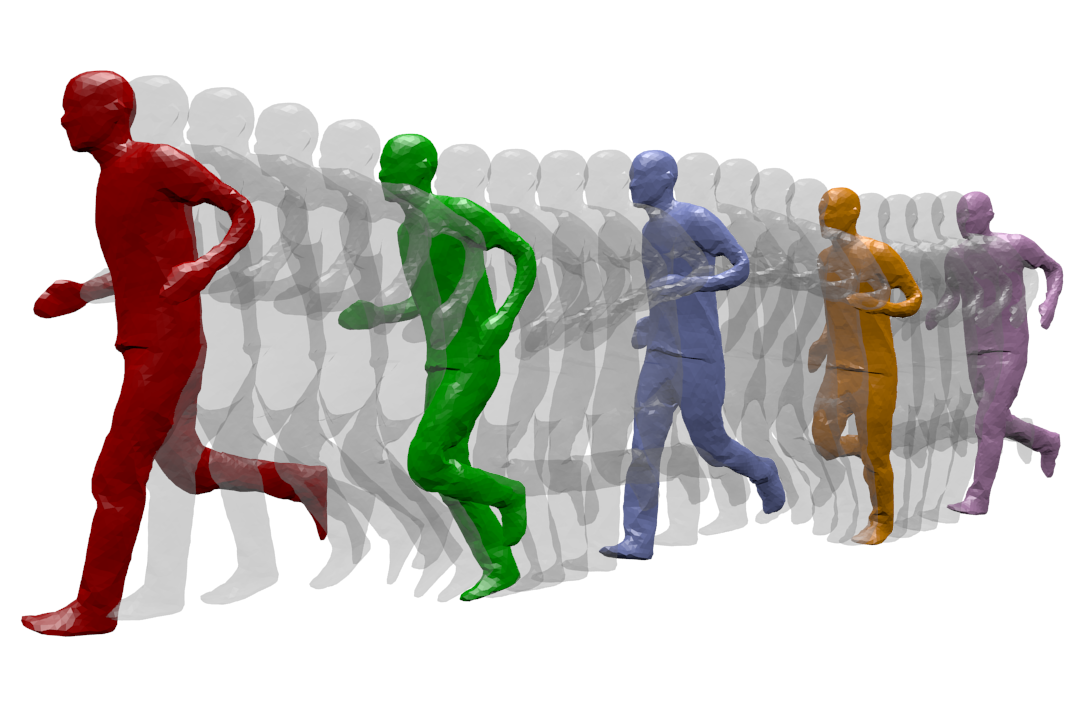Section: Overall Objectives
Overall Objectives
Morpheo's main objective is the ability to perceive and to interpret moving shapes using systems of multiple cameras for the analysis of animal motion, animation synthesis and immersive and interactive environments. Multiple camera systems allow dense information on both shapes and their motion to be recovered from visual cues. Such ability to perceive shapes in motion brings a rich domain for research investigations on how to model, understand and animate real dynamic shapes. In order to reach this objective, several scientific and technological challenges must be faced:
A first challenge is to be able to recover shape information from videos. Multiple camera setups allow to acquire shapes as well as their appearances with a reasonable level of precision. However most effective current approaches estimate static 3D shapes and the recovery of temporal information, such as motion, remains a challenging task. Another challenge in the acquisition process is the ability to handle heterogeneous sensors with different modalities as available nowadays: color cameras, time of flight cameras, stereo cameras and structured light scanners, etc.
A second challenge is the analysis of shapes. Few tools have been proposed for that purpose and recovering the intrinsic nature of shapes is an actual and active research domain. Of particular interest is the study of animal shapes and of their associated articulated structures. An important task is to automatically infer such properties from temporal sequences of 3D models as obtained with the previously mentioned acquisition systems. Another task is to build models for classes of shapes, such as animal species, that allow for both shape and pose variations.
A third challenge concerns the analysis of the motion of shapes that move and evolve, typically humans. This has been an area of interest for decades and the challenging innovation is to consider for this purpose dense motion fields, obtained from temporally consistent 3D models, instead of traditional sparse point trajectories obtained by tracking particular features on shapes, e.g. motion capture systems. The interest is to provide full information on both motions and shapes and the ability to correlate these information.The main tasks that arise in this context are first to find relevant indices to describe the dynamic evolutions of shapes and second to build compact representations for classes of movements.
A fourth challenge tackled by Morpheo is immersive and interactive systems. Such systems rely on real time modeling, either for shapes, motion or actions. Most methods of shape and motion retrieval turn out to be fairly complex, and quickly topple hardware processing or bandwidth limitations, even with a limited number of cameras. Achieving interactivity thus calls for scalable methods and research of specific distribution and parallelization strategies.



